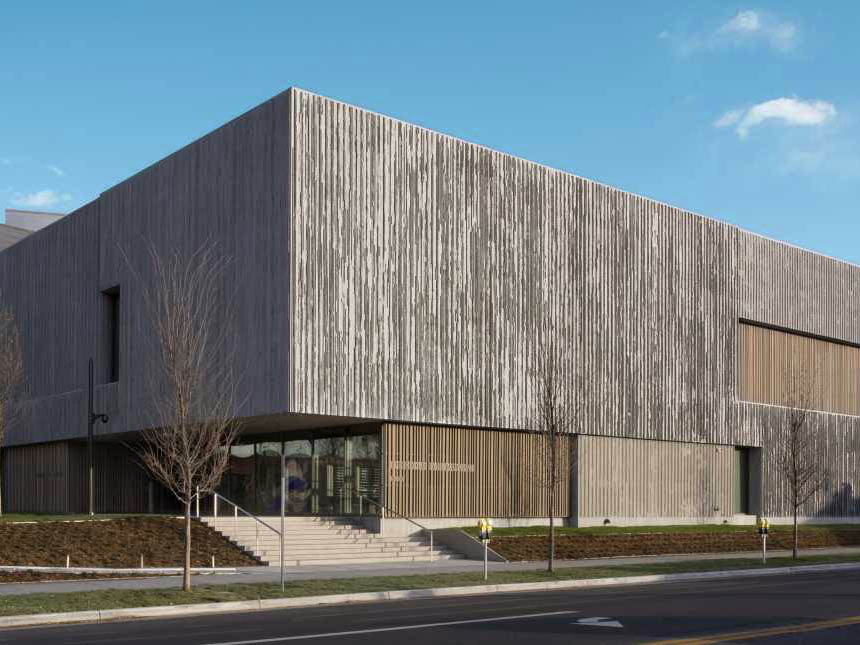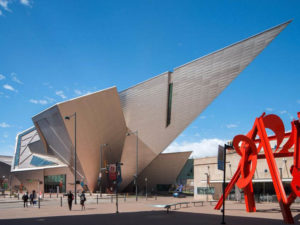THE PSYCHOLOGY OF EMOTION IN ARCHITECTURE
Scientists have long studied how we feel in different settings—and it’s no secret that people’s brains respond more positively to natural settings than to artificial ones. Most people find being inside a building partially lit by large windows that overlook a greenspace more appealing than inside a florescent-lit space full of office cubicles. The reactions are both simply sensory and “historical.”
To get specific about what happens in our brains—to define “urban psychology”—various studies have tracked how people respond to different areas while on short “psycho-geographic” walking tours. By recording both physiological responses (through a medical device) and emotional reflections by participants, scientists—and architects—noted consistent results. People simply respond better, feel freer, and enjoy living and working in areas that include nature—whether they’re actually outside in a park, or looking at nature through windows. They particularly like “experiencing” nature, through having access to outside air and natural light.
In addition, scientists observed that the more open and varied building facades are, the more engaged the walkers become. It might seem obvious, but the more openings a building has, and the more is “going on,” the more the walkers look, and even stop to shop or eat or engage. This is where the idea of full glass storefronts that slide open to let in the air—along with street noise, people, and even birds—is a trend in urban settings.
Our own personal history also plays a strong role in how we associate certain experiences with certain building styles or open areas. In one study done in New York City, those who were new to the environment reacted much more positively than did resident New Yorkers to a bare patch of ground with a fence around it. The visitors saw the space as something other than a paved-over area; the New Yorkers saw it as an unfinished space, as compared to a proper park. Other studies shows that our response to plain “institutional” building styles is less engaged than it is with architecture that has more fluidity or variety. In our collective experience, institutional buildings mean business that has little impact on our daily lives.
Stefan Behling, a Senior Executive Partner at international firm Foster + Partners (designers of extra-terrestrial habitats on the Moon and Mars), quotes statistics that say more than 50 percent of us live in cities; in the United States, 87 percent of our time is spent indoors, and much of that in artificial environments. Around the 1930s, he says, “black box factories” were built for the production of airplanes or other equipment. The intention was to create multifunctional spaces that were inexpensive with few windows, artificial light and temperature control. In bland, artificial environments—like submarines and solitary confinement areas—people experience headaches, eye problems, and hallucinations. Our brains struggle to find variety and natural stimulation when our senses are deprived of their utilization. In absence of sensory engagement, we are forced to create our own stimulus in our work or our minds.
Importantly, much of the research in this field shows that even the “perfect environment” must include variations for the human mind to feel comfort and function productively. However, one Colorado architect wonders if we can go too far. Don Ruggles believes that a building’s having too many sharp points or odd angles can actually hurt us. Not by poking us in the eye, but by shocking our systems. He advocates, simply…beauty. “Beauty is not ‘in the eye of the beholder,’” Ruggles says, “but a neurological event.”
He’s not the only one in this field to quote the research that the human animal prefers the savannah to any other landscape. But when it comes to buildings, he says that “beauty” comes in the form of a sturdy, familiar, Parthenon-like structure—it puts us at ease. In fact, Ruggles maintains that our brains search for the comfort of a nine-square “tic-tac-toe” board shape within architectural structures, or the features of a face in building facades—in two window “eyes” and a door “mouth.” In contrast, he says the trend toward wild designs in houses and public buildings simply can’t last, because people won’t remain comfortable in them. He contrasts the eye-popping Hamilton wing of the Denver Art Museum with the Clyfford Still Museum, which is right next door.
What architects Daniel Libeskind and Davis Partnership Architects consider dramatic and surprising—the Hamilton wing’s collage of unexpected angles and sharp points, sheathed in titanium—Ruggles says makes the viewer uncomfortable. Is it lifting off or falling down? He says it makes our brains want to escape.
Many people might have opinions about the Hamilton wing, but not everyone agrees with Ruggles’s ideas about beauty. Harsh Parikh, a modernist Denver architect and president of Parikh Stevens Architects, says, “I don’t agree that the human mind is conditioned for classical proportions. The human mind evolved over 100,000 years. It’s a real stretch to argue that we are predisposed to find a more traditional aesthetic appealing.” Besides, he says, “the idea of what’s beautiful or restful is a fluid concept, neither cross-cultural nor universal across time.”
In the end, architects argue over conservative versus progressive, or good versus bad, or proportion and scale, or integrity of a project, or, simply, quality. But no one argues about whether people appreciate having nature integrated in architectural spaces. Even a window in the Space Station went a long way for the people who live there. And prison designs are being upgraded as we speak.
In the end, sunlight is bluer in the morning and more yellow in the evening. If we sit in a cubicle, all day and into the evening—and it is lit with bluish, daytime light—then we have trouble with our internal clocks. But if we have access to what’s happening outside—if we experience fresh air, smell the rain, see plants, watch the sun move in the sky, then our bodies respond more naturally. And we just feel better.
Perhaps the best advice is: “Build to suit.” Build to suit human realities and needs and perceptions first. Let the architecture follow.
SOURCES
BICA, ADRIAN, “Bringing back emotion and intimacy in architecture”;
BEHLING, STEFAN, “Architecture and the science of the senses”;
ELLARD, COLIN, “The psychology of architectural and urban design”;
OSTROW, JOANNE, “Is Denver’s contemporary architecture killing us?” The Colorado Sun, Nov. 12, 2018.

